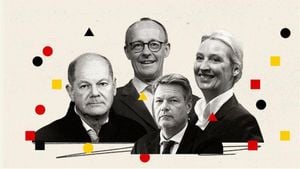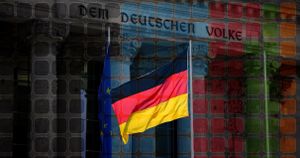Poland's relationship with Ukrainian refugees is undergoing significant transformations as the war drags on, resulting in shifting immigration patterns and changes within the Polish labor market. Once welcoming over 1.5 million Ukrainians since the onset of conflict, recent reports indicate not just the number of arrivals is declining, but also decreasing positive sentiment among Polish citizens toward their Ukrainian counterparts.
According to the Polish Ministry of Internal Affairs, there are currently approximately 1.5 million Ukrainians residing in Poland since the beginning of Russia’s full-scale invasion on February 24, 2022. Notably, around 980,000 of these individuals benefit from temporary protective measures. Border crossing data suggests additional complexity: Poland’s Border Guard recorded 8.7 million entries from Ukraine to Poland for 2024, marking a decrease of 3 percent compared to 2023, and denied entry to 15,800 citizens, which reflects growing apprehensions.
This transformation is garnering attention as fewer Ukrainian refugees are securing employment compared to preceding years. By the end of 2024, Polish labor offices fielded 2.87 million notifications about hiring Ukrainian employees, translating to just under 1.2 million individuals. Alarmingly, only 453,000 are still contributing to Poland's social security system, ZUS.
Expert Krzysztof Inglot, founder of Personnel Service, emphasized the anticipated future waves of Ukrainian migration contingent upon Ukraine’s reconstruction post-conflict. "The future of labor migration will be shaped by both Ukraine’s rebuilding process and the competitiveness of the Polish job market," said Inglot. He predicts over one million new arrivals seeking stability and opportunities will likely overwhelm the current structures if not properly prepared for.
Indeed, as concerns grow, there’s notable skepticism among Poles about immigration. The percentage of Poles with negative feelings toward Ukrainians has increased to 18 percent, according to recent surveys. A stark demographic divide exists too, with younger Poles—especially those aged 18 to 24—revealing the highest levels of anxiety about job loss due to competition from Ukrainian workers.
Despite the potential risks associated with negative sentiments, Ukrainian refugees maintain largely favorable views of Poland, with 70.3 percent expressing positive opinions—a drop from 83.3 percent the previous year. Interestingly, Ukrainian women feel more positively than men, with 77 percent favoring their experiences compared to just 62 percent of male refugees.
On the political front, these changing dynamics have reached authorities. MEP Anna Bryłka from the anti-Ukrainian Confederation party articulated the monetary stakes involved, declaring, "Aid costs money," during her appearance on Radio ZET. Bryłka argued for securing repayable assistance agreements with Ukraine, emphasizing the need for economic facilitation rather than unconditioned aid. This sentiment resonates particularly under the scrutiny of how U.S. economic interests intertwine with security guarantees extended to Ukraine.
Discussions of aid's economic ramifications have surfaced as Ukraine is approached by U.S. officials for compensation relating to the backing provided since the invasion began. Reports indicate Ukraine's hesitance to fully embrace American proposals for monetary compensation linked to access of its resources.
Indeed, Mr. Inglot’s assertion about preparing for long-term solutions is echoed by both the indigenous and refugee population. "Just as Poland provided urgent assistance at the start of the war, we must now prepare for long-term solutions..." he asserted. He advocates for comprehensive policies allowing for social and psychological support for arriving Ukrainians, as the workforce adjusts and evolves.
This gradual approach toward immigration reflects broader societal currents influenced by economic conditions and political sentiment. The real challenge lies not only with Poland's capacity to welcome newcomers but fostering effective integration strategies ensuring they can contribute positively to society and economy. The specter of long-term stability rests on how both Poland and Ukraine navigate the aftermath of conflict, especially concerning how to maintain workforce competitiveness and mutual goodwill.
The future of the Polish-Ukrainian relationship remains at a pivotal junction. With changing workforce demographics and national sentiment, the coming months will undoubtedly establish what lies next for both nations—whether as collaborators facing shared trials or as communities grappling with skepticism and anxiety.



